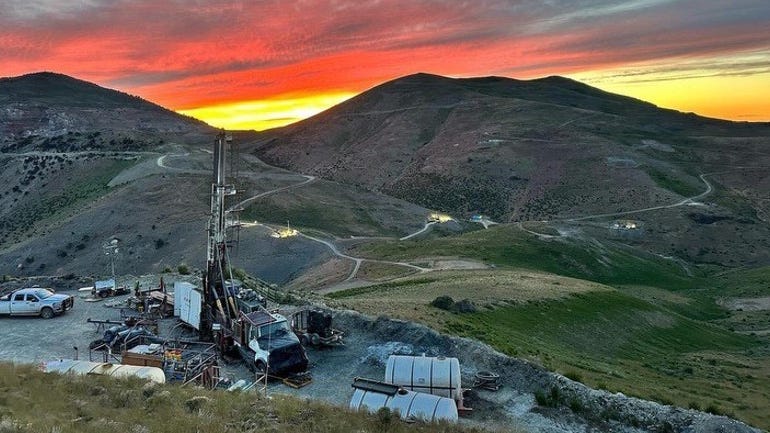Barrick Kicks off Review Following Bristow’s Exit
Record Q3 cashflow and increased dividend overshadowed by fatalities
Barrick Mining Corporation (TSX: ABX) has reported record quarterly free cashflow in the first set of quarterly results handed down since the sudden departure of former CEO Mark Bristow in September.
Barrick produced 829,000 ounces of gold, 4% higher quarter-on-quarter, while all-in sustaining costs were US$1538 per ounce, down 9%. Copper production was 55,000 tonnes, down 7%, at AISC of US$3.14 per pound.
Full-year 2025 guidance remains unchanged at 3.15-3.5Moz, tracking in the lower half of the range, with quarterly production expected to be the highest in the current quarter.
A portion of fourth quarter production from Hemlo and Tongon will be excluded, following the announced sales of both assets.
AISC guidance of US$1460-1560/oz was based on a US$2400/oz gold price. Adjusting for the current gold price and the impact on royalties on costs of roughly US$50/oz, full-year AISC is expected to be US$1510-1610/oz.
Full-year copper production guidance remains at 200,000-230,000t at AISC of US$2.80-3.10/lb.
The company generated US$4.1 billion in revenue, as well as a record US$2.4 billion in operating cashflow, up 82%, and US$1.5 billion in free cashflow, up 274%.
Net earnings for the quarter were US$1.3 billion, or US76c per share, while adjusted net earnings were US$982 million, or a record US58c per share.
The Barrick board approved the increase of the company’s base quarterly dividend by 25% to US12.5c per share, plus a performance dividend of US5c per share.
The company has repurchased US$1 billion of shares since the start of the year, with the existing buyback program expanded by US$500 million to up to US$1.5 billion.
Hill at the helm
Barrick veteran Mark Hill was promoted to group chief operating officer and interim president and chief executive officer following Bristow’s departure.
The company said the board’s search committee, chaired by Brett Harvey, was working with a leading executive search firm to identify a permanent president and CEO.
Since taking over, Hill said he had met with Barrick’s teams across the globe to assess what could be done differently and has initiated a “bottom-up” operational review, focused on consistent delivery.
Hill said there would be a stronger emphasis on safety and operational performance and he would refocus Barrick to North America and its most important asset, Nevada Gold Mines and the Fourmile project.
“I don’t think the strategy has changed at all,” he said during an analyst call on Monday.
“You’ve obviously gathered my focus, or where I see the most value, is obviously in Nevada, so we’re going to build out those two growth projects we have, but then the next thing is definitely shifting the focus to America.
“We’re going to spend a bigger proportion of our exploration as well in Nevada and North America, so I suppose it’s not really a shift, but if you ask me where my attention is going to be, and maybe there is a little bit of a change, then it’ll be all the focus we’re going to put into North America, because I do see a big opportunity there, and I do see [Fourmile] as the next big project and the next big growth area for Barrick.”
Barrick has 16 drill rigs working at Fourmile currently and expects that to increase to 20 next year.
Safety in focus
Barrick reported three fatalities, including an injury at Kibali in the June quarter that was reclassified as a fatality after an employee succumbed to their injuries.
On September 29, an employee at the Goldrush underground mine in Nevada suffered fatal injuries, while on October 21, an employee sustained fatal injuries at the Bulyanhulu mine in Tanzania.
Full investigations into all three incidents are underway.
Barrick had gone nearly 12 months without a fatality.
Hill said he didn’t believe there was a gap in processes or standards.
“I think it’s about culture. I think it’s about leadership. I think most of those systems are in place, and I think they’re solid, and we’re just going to have to reset and get everyone on the same page that safety is the number one priority of this company,” he said.
“The minute we get safety in line, normally, what you see is you see an uptick in production and overall, just more efficient operations.”



The opperational review under Hill seems like a smart move given the safety incidents overshadowed what are othewise solid Q3 numbers. Focusing on Nevada and Fourmile makes sense when you look at the cost structure and where the highest quality reserves are. That 25% dividend increse is a strong signal about managemnt confidence despite the leadership transition.